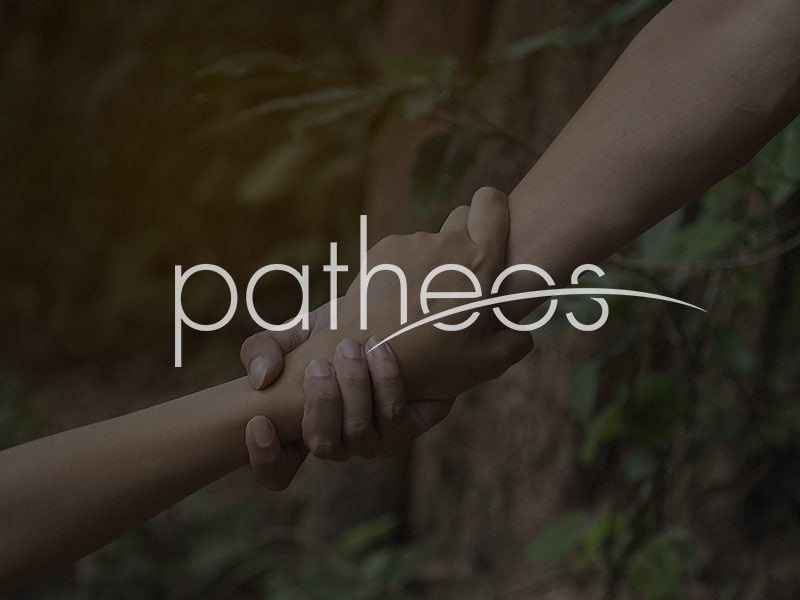I’m not usually a big fan of Nicholas Kristof, but he has written a perceptive New York Times column on the symmetry of the rhetoric on either side of the Israel-Palestine conflict and its latest flare-up. Perceptive, that is, in a way akin to pointing out the emperor’s nakedness: stating the obvious, which is less obvious than it should be.
Here are his counterpoints to three of the “oddly parallel” clichés of the cycle of violence being thrown around yet again.
This is a struggle between good and evil, right and wrong. We can’t relax, can’t compromise, and we had no choice but to act.
On the contrary, this is a war in which both peoples have a considerable amount of right on their sides. The failure to acknowledge the humanity and legitimate interests of people on the other side has led to cross-demonization. That results in a series of military escalations that leave both peoples worse off.
Israelis are absolutely correct that they have a right not to be hit with rockets by Hamas, not to be kidnapped, not to be subjected to terrorist bombings. And Palestinians are absolutely right that they have a right to a state, a right to run businesses and import goods, a right to live in freedom rather than relegated to second-class citizenship in their own land.
Both sides have plenty of good people who just want the best for their children and their communities, and also plenty of myopic zealots who preach hatred. A starting point is to put away the good vs. evil narrative and recognize this as the aching story of two peoples — each with legitimate grievances — colliding with each other.
Without disagreeing with Kristof’s fundamental point here, I would nuance it to say that it is about good and evil, just not in the way we’re tempted to think. That is, it is not a struggle between good and evil people, but between good and evil in people – in thoughts and words, doings and failings. As Solzhenitsyn once said, “The line between good and evil cuts through the heart of every human being.”
The other side understands only force. What else can we do but fight back when we are attacked?
Israeli leaders, starting with Prime Minister Benjamin Netanyahu, think that the way to protect their citizens is to invade Gaza and blow up tunnels — and, if Gazan civilians and children die, that’s sad but inevitable. And some Gazans think that they’re already in an open-air prison, suffocating under the Israeli embargo, and the only way to achieve change is fire rockets — and if some Israeli children die, that’s too bad, but 100 times as many Palestinian children are dying already.
In fact, we’ve seen this movie before: Israel responded to aggression by invading Lebanon in 1982 and 2006, and Gaza in 2008; each time, hawks cheered. Yet each invasion in retrospect accomplished at best temporary military gains while killing large numbers of innocents; they didn’t solve any problems.
Likewise, Palestinian militancy has accomplished nothing but increasing the misery of the Palestinian people. If Palestinians instead turned more to huge Gandhi-style nonviolence resistance campaigns, the resulting videos would reverberate around the world and Palestine would achieve statehood and freedom.
Some Palestinians understand this and are trying this strategy, but too many define nonviolence to include rock-throwing. No, that doesn’t cut it.
Yes, nonviolence works. We’ve seen it work in the struggle for Indian independence under Gandhi, the U.S. civil rights movement under King, the downfall of Serbian dictator Slobodan Milosevic precipitated largely by student activists, the Truth and Reconciliation Commission in post-apartheid South Africa, the silent protests begun by Turkey’s “duran adam“. It remains to be seen how it might work in today’s Middle East, but what it undoubtedly won’t look like is the assumption behind the final point Kristof responds to.
What would you do if your family were in Gaza/Israel, at risk of being killed. You wouldn’t just sit back and sing ‘Kumbaya,’ would you?
If any of us were in southern Israel, frightened sick by rockets being fired by Hamas, we, too, might cheer an invasion of Gaza. And if any of us were in Gaza, strangled by the embargo and losing relatives to Israeli airstrikes, we, too, might cheer the launch of rockets on Tel Aviv. That’s human nature.
That’s why we need to de-escalate, starting with a cease-fire that includes an end to Hamas rocket attacks and a withdrawal from Gaza by Israel. For Israel, this is a chance to use diplomacy to achieve what gunpowder won’t: the marginalization of Hamas. Israel might suggest an internationally supervised election in Gaza with the promise that the return of control to the Palestinian Authority would mean an end to the economic embargo.
Here we have a conflict between right and right that has been hijacked by hard-liners on each side who feed each other. It’s not that they are the same, and what I see isn’t equivalence. Yet there is, in some ways, a painful symmetry — and one element is that each side vigorously denies that there is any symmetry at all.
The false dichotomy between violence and passivity leads to the stereotype of nonviolence as hippy-trippy indifferentism, but true and strategic nonviolence is not hand-holding and ‘Kumbaya’. History has already provided plenty of much more powerful images to replace it with, so when we hear “nonviolence”, let’s think instead of black youth sitting at a diner politely asking to be served, bearing insult and abuse with dignity; a line of Indian ascetics seeing their companions beaten and still moving forward row by row, refusing to either back down or strike back; a lone man and then a crowd standing silent and still in Istanbul’s Taksim Square; Archbishop Romero’s blood mingling with the blood of Christ on the altar. It’s not for me to say what a nonviolent strategy could look like for Israelis and Palestinians, but the fundamental principle remains universally true: it will call for great creativity and great courage, and it will begin when one refuses to hand the other excuses to retaliate.
It is admittedly easy to judge the short-sightedness of a self-feeding conflict in which one does not have a personal stake. Yet the lines Kristof responds to are echoes, not only of both sides of the conflict at hand, but of the rationale for the perpetuation of countless other violent conflicts. The logic of violence is painfully unoriginal, and as long as the cycle continues, no two enemies can avoid sounding much, much more alike than they will ever admit.












